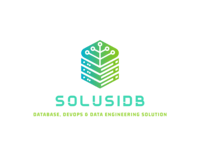
PostgreSQL is a powerful, open-source relational database management system (RDBMS) known for its robustness, extensibility, and standards compliance. Understanding its architecture is crucial for optimizing performance, ensuring reliability, and effectively managing databases. Here’s a deep dive into PostgreSQL architecture:
1. Overall Architecture
PostgreSQL follows a client-server architecture, where the server process handles all database requests and the client applications interact with it over a network.
- Client: Any application that connects to the PostgreSQL server (e.g., web applications, data analytics tools).
- Server: The PostgreSQL instance that manages data storage, query execution, and connections.
2. Processes
PostgreSQL is multi-process based, meaning each client connection is handled by a separate server process. Key types of processes include:
- Postmaster: The main process that starts other processes, manages connections, and handles database operations.
- Backend Processes: Created for each client connection, these processes execute queries, manage transactions, and return results.
- WAL (Write Ahead Log) Writer: Manages writing changes to the WAL, ensuring durability.
- Checkpointer: Periodically writes dirty pages from memory to disk.
- Autovacuum: Automatically cleans up dead tuples and maintains database health.
- Background Writer: Writes dirty pages to disk to free up shared memory.
3. Memory Architecture
PostgreSQL utilizes multiple memory areas for efficient data processing:
Shared Memory: Used by all processes to communicate and share data. Key components include:
- Shared Buffers: The main cache for table and index data.
- WAL Buffers: Cache for WAL records before writing to disk.
Work Memory: Memory used for operations like sorting and hashing. Each connection can use its own work memory up to the defined limit.
Maintenance Work Memory: Used for maintenance tasks like
VACUUM,CREATE INDEX, etc.
4. Storage Architecture
PostgreSQL organizes data in a structured way:
- Tablespaces: Locations on disk where databases are stored.
- Databases: Each database is a separate namespace containing schemas, tables, indexes, and other objects.
- Schemas: Logical containers for organizing database objects (tables, views, functions).
5. Data Storage
PostgreSQL stores data in a table format, with rows and columns. Key components include:
- Heap Files: The primary storage format for table data. Data is stored as tuples in pages.
- TOAST (The Oversized-Attribute Storage Technique): Used to store large field values (like large text or binary data) efficiently.
- Indexes: Structures that improve data retrieval speed. PostgreSQL supports various index types, including B-tree, Hash, GiST, and GIN.
6. Transaction Management
PostgreSQL employs a multi-version concurrency control (MVCC) system for handling transactions:
- Transactions: Grouped operations that either succeed or fail together, ensuring atomicity.
- MVCC: Allows multiple transactions to read data without locking, improving concurrency. Each transaction sees a snapshot of the database at a specific time.
7. Write-Ahead Logging (WAL)
WAL ensures data durability and crash recovery:
- WAL Mechanism: Changes are first recorded in the WAL before being applied to the data files. This allows for recovery in case of a crash.
- Checkpointing: Periodically, the system flushes WAL records and dirty pages to disk, reducing recovery time.
8. Query Processing
PostgreSQL follows a structured query processing workflow:
- Parser: Analyzes the SQL query and generates a parse tree.
- Rewriter: Transforms the parse tree into a query tree (for views and rules).
- Planner/Optimizer: Generates an execution plan using cost-based optimization. It evaluates various strategies and selects the most efficient one.
- Executor: Executes the query using the chosen plan, interacting with storage as needed.
9. Extensibility
PostgreSQL is highly extensible:
- Custom Data Types: You can define your own data types.
- Operators and Functions: Create custom operators and functions in multiple programming languages (e.g., SQL, PL/pgSQL, PL/Python).
- Extensions: Add functionality via extensions like PostGIS for GIS data, and more.
10. Security
PostgreSQL includes robust security features:
- Authentication: Supports various authentication methods (password, LDAP, etc.).
- Role-Based Access Control: Users and roles can be assigned specific permissions for database objects.
- SSL/TLS: Supports encrypted connections for secure data transmission.
Conclusion
PostgreSQL’s architecture is designed for high performance, reliability, and extensibility. Understanding its components and processes allows developers and database administrators to optimize their applications and manage data effectively. By leveraging its features, you can build robust and scalable database solutions.

